Prophetic Piety in Ottoman Islam: Manifestation of Love and Devotion
The universal essence of Islam necessitated a clear exposition through the Qur'an, accessible to all beings in the universe. Its practical application in daily life was exemplified by the Prophet Muhammad, peace be upon him, sent by Allah to demonstrate its perfection and applicability. The Qur'an and the Prophet consistently urge the Ummah to follow Allah and his messenger, aiming for excellence in this life to attain success in the hereafter.
The directive to obey Allah and the messenger is a cornerstone of Islamic teachings. It is through love and emulation of the Prophet in his conduct that individuals achieve this adherence. Love (Hubb) for the Prophet naturally leads to emulation (Ithiba), and vice versa, forming a symbiotic relationship that fosters piety.
Al-Qur’an commands,
" Obey Allah and Obey the messenger….."[1],
" Say, [O Muhammad], "If you should love Allah, then follow me,......[2]
In the absence of direct interaction with the Prophet, subsequent generations of the Ummah sought to understand and emulate him through Hadith and scholarly teachings. Many devout individuals, known as lovers (ashik), attained spiritual visions of the Prophet in dreams as they endeavoured to connect with his teachings.
Expressions of Prophetic love manifest in diverse forms across society, from communal gatherings like Swalath and Majlis to personal devotions such as night vigils. Throughout Islamic history, rulers known as ashik, driven by their love for the Prophet, endeavoured to embody his example and serve their communities accordingly.
The Ottoman Empire's history is replete with exemplary manifestations of Prophetic Piety, embodied by notable sultans such as Murad III, Ahmed I, and Sultan Abdülhamit Khan II. Sufi schools, which emerged or interacted with Turkish communities, significantly influenced Turkish Islam and its expression of Prophetic Piety. Rulers across various Turkish dynasties often adhered to contemporary Sufi teachings, drawing inspiration for their governance and personal lives.
According to Ottoman history scholar Dr. Mehmet İpsiril[3], the Ottoman dynasty exhibited profound reverence for Prophet Muhammad and Islam. İpsiril cites Bernard Lewis, whose observations underscore the Ottomans' deep connection with Islam. Titles such as "Memalik-i Islamiye" (Nation of Islam) for the empire, "Padishah-i Islam" (Sultan of Islam) for the emperor, "Asakir-i Islam" (Soldiers of Islam) for the army, and "Şeyhülislam" (Scholar of Islam) for the clergy, reflect this intrinsic bond between Ottoman and Islamic cultures.
This affinity extended beyond the royal household; Ottoman subjects and court poets also revered Prophet Muhammad as a guardian and symbolic ruler. Their profound attachment to Islam suggests that their identity was intricately intertwined with the faith, echoing throughout their arts, hearts, and societal norms.
Sultan Murad III of the Ottoman Empire officially established the celebration of Prophet Muhammad's birthday as a national holiday[4], observed in imperial mosques and embraced by the entire community. He also mandated the recitation of the Mevlid, an ode to the Prophet's birth, which was later commemorated by his grandson Sultan Ahmed in the founding document of his mosque in 1617. Süleyman Çelebi's canonical Mevlid poem, "Vesiletü'n Necat," composed in the sixteenth century, remained central to these celebrations, still recited today[5].
During the revered Mevlid gatherings attended by the imperial family, scholars, and servants, the recitations were punctuated by interruptions for sweets and sherbets. Attendees would rise in reverence as the narrative approached the moment of Prophet Muhammad's birth[6].
The Turkish people, renowned for their rich oral culture, also possessed a deep appreciation for listening. They engaged with various texts that celebrated the love for Prophet Muhammad, such as the Mevlid, Muhammediya, Ahmediye, Kara Davud, and Muzakki Nüfus.
While the Ottoman Empire celebrated Prophet Muhammad's birthday through diverse practices and programs, Ottoman Arab lands had its distinctive Mahya tradition, an all-night vigil held in mosques. In a small mosque in Damascus, amidst the glow of candles and lamps on a chilly night, prayers, Quranic recitations, dhikr (remembrance of Allah), and blessings upon the Prophet reverberated through the air, culminating in the Swalath ala Nabi[7].
The Mahya, originating in sixteenth-century Cairo under the guidance of Sheikh Nur al-Din al-Shuni, focused on devotion to Prophet Muhammad and often led to spiritual visions of the Prophet. Reciting prayers, contemplating his physical attributes, hosting birthday celebrations, and seeking his vision in dreams were integral aspects of the Mahya, showcasing its significance in the early modern Ottoman Empire.
Abdülhamid Khan II, the Ottoman Sultan renowned for his prophetic piety and love, is particularly remembered for his compassion and generosity. One famous tale involves a trader who, burdened by debts, sought help from God in his distress. That very night, the Prophet Muhammad appeared in the trader's dream, advising him to bring his grievances to "Our Hameed" and remind him of the missed Swalath (prayer) from the previous night. When the trader relayed this message to Sultan Abdülhamid, the Sultan was deeply moved and regretful for his oversight. However, the mention of "Our Hameed" in reference to him by the Prophet filled him with joy. In his happiness, the Sultan repeatedly rewarded the trader with purses of money until he exhausted his treasury. When Thahseen Pasha remarked on the Sultan's lavish generosity, Abdülhamid expressed his willingness to give away all his wealth and power had the trader asked for more[8]. It's even reported that before bringing electricity to his own palace in Istanbul, the Sultan lit the Masjid of the Prophet in Medina.
Under Ottoman rule, descendants of Prophet Muhammad were held in high esteem, exempted from taxes, and provided with special aid and pensions. However, this led to an increase in false claims of nobility, termed "teseyyud," prompting the Empire to maintain official registers of recognised Sadat (descendants of the Prophet). These privileges were granted to ensure the financial well-being of the descendants.
In the Ottoman Empire, it was customary for the Nakibul Eşraf, the highest-ranking Sayed, to congratulate the Ottoman sultans shortly after their accession to the throne. This tradition of respect for the Syeds, descendants of Prophet Muhammad, persisted from the reign of Osman I to Mehmet VI.
Ottoman artists were prolific in producing illustrations and artistic works depicting the Prophet Muhammad, often portraying him as "Nur Muhammad," symbolising his radiant essence. The depiction of Nur Muhammad typically involved a white facial veil, conveying a sense of reverence and sanctity. Poets in the Ottoman divan, such as Nabi of Urfa and Mustafa Darir, also contributed to the exaltation of Prophet Muhammad through their works and illustrations, such as the beloved "Siyere Nabi." Sultan Murad III even commissioned an illustrated copy of the sira (biography) of the Prophet for his son, Mehmet III.
These artistic representations served to bring the Prophet into the present, imbuing his image with a sense of protection and divine blessing. Additionally, the Ottomans revered relics associated with Prophet Muhammad, such as the holy mantel awarded to Ka'b ibn Zuhayr for his qasida (poem). This mantle, claimed to have been acquired by the Ottomans during the conquest of Egypt, was kept in a chamber adorned with the opening lines of the famous Qasida Al-Burda by Imam al-Busiri, further emphasising the veneration of Prophet Muhammad in Ottoman culture.
The Ottoman Empire's unparalleled love and reverence for Prophet Muhammad are eloquently captured in the words of Sheikh Muhammad Aslam, who observed that their devotion elevated them in the eyes of Allah. Their exemplary etiquette was manifest in the way they humbly lowered their heads and placed their hands upon their hearts whenever the name of Prophet Muhammad was mentioned in their presence, regardless of the circumstances.
Artistic expressions of this love were widespread throughout the empire. Many hadith texts were meticulously rendered into beautiful calligraphy, while poets eloquently visualised the Prophet through their verses. Among the prophetic traditions highly venerated by the Ottomans was the hadith concerning the conquest of Constantinople, a city they regarded as their Kızılelma (red apple)[9]. This hadith served as a source of inspiration and spiritual fuel for many rulers and commanders who aspired to conquer the holy city.
The prophetic saying, "Verily, you shall conquer Constantinople. What a wonderful army will that army be, and what a wonderful commander will that conqueror be,"[10] resonated deeply within the Ottoman ranks, particularly during the time of Mehmet the Conqueror. It energised his army and fueled their determination to achieve the Red Apple, ultimately leading to the historic conquest of Constantinople.
References:
Jonathan Parkes Allen ,Up all night out of love for the prophet: Devotion , sanctity, and ritual innovation in the Ottoman Arab lands, 1500-1620
Christiane Gruber,Between the logos (kalima) and light (Nur), the representation of the prophet Muhammad in Islamic painting.
Hülya Canbakal, The Ottoman State and Descendants of the Prophet in Anatolia and the Balkans (c.1500-1700)
Edited by Rachida Chih, David Jordan, Stefan Reichmuth, The Presence of the Prophet in Early Modern and Contemporary Islam
Volume 2. Heirs of the Prophet: Authority and Power.
Gottfried Hagen, Pietas ottomanica the house of Osman and the prophet Muhammed.
Endnotes
[1] Al-Qur’an, Sura Al nisa' :59
[2] Al-Qur’an, Sura A'l Imran: 31
[3] Dr. Mehmet ipsiril is lecturer in the Department of Archiving at the Faculty of Letters. Istanbul University
[4] The Ottoman chronicler Muṣṭafā Selānīkī (d. after 1008/1600) reports under the date of Rabīʿ al-Awwal 996 (1588) that Sultan Murād III issued the following decree:
Tuesday the twelfth of this month is the night when his Excellence the leader of all living beings and pride of all existence – peace be upon him – was born and honoured with his visit and enlightened the courtyard of this world. It behoves us to honour him and show our reverence, so let all the minarets be illuminated, and let mevlids be recited in the mosques, and the nation of sinners cry and wail and ask for his intercession, and let them occupy themselves with the recitation of blessings, praises, and benedictions. Just as in the Nights of Reġāʾib and Berāʾat let the illumination of the minarets be customary
[5] The exact form of the practice is unknown though, the canonical mevlid poem of Süleyman Çelebi is assumed to be the central to it.
[6] according to Ignatius Mouradgea d'Ohsson, an American orientalist and historian.
[7] Jonathan Parkes Allen in the article Up all the night out of love for the prophet: Devotion, sanctity and ritual innovation in the ottoman Arab lands 1500-1620
[8] Thahseen Pasha Reports in his biography of Sultan Abdülhamit Han
[9] In the myth of Turkish cultural conquest, the coveted destinations for conquest were referred to as the "kızıl elma," meaning the red or golden apple.
[10] Although the debate exists upon the army which would conquer Constantinople, mentioned in Hadith, whether it is Ottomans or the Mahdi in the last days.
About author. Murshid Amarayil is a PG scholar of the department of civilisational studies at Darul Huda Islamic University, Chemmad.
Disclaimer
The views expressed in this article are the author’s own and do not necessarily mirror Islamonweb’s editorial stance.

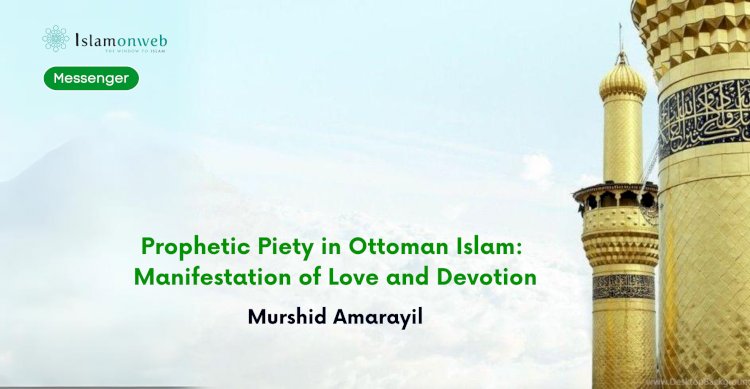


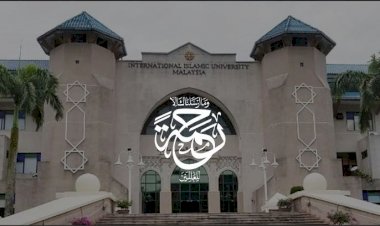
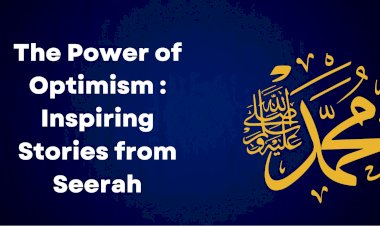


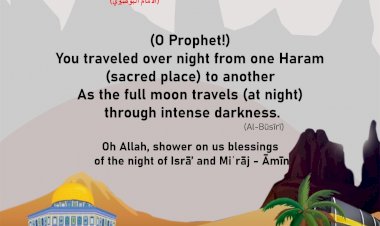
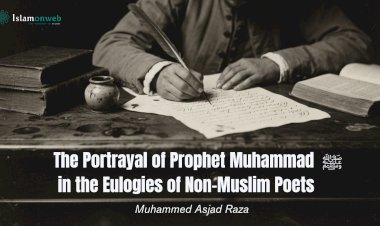














Leave A Comment